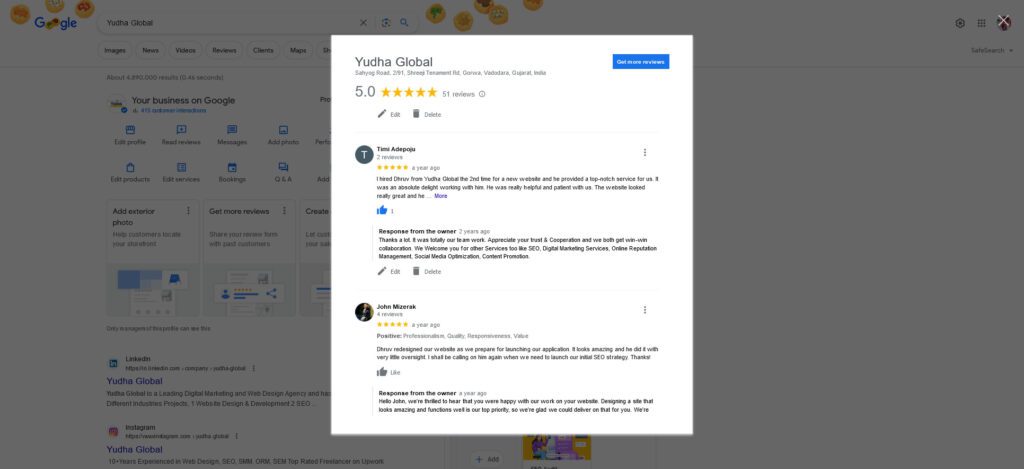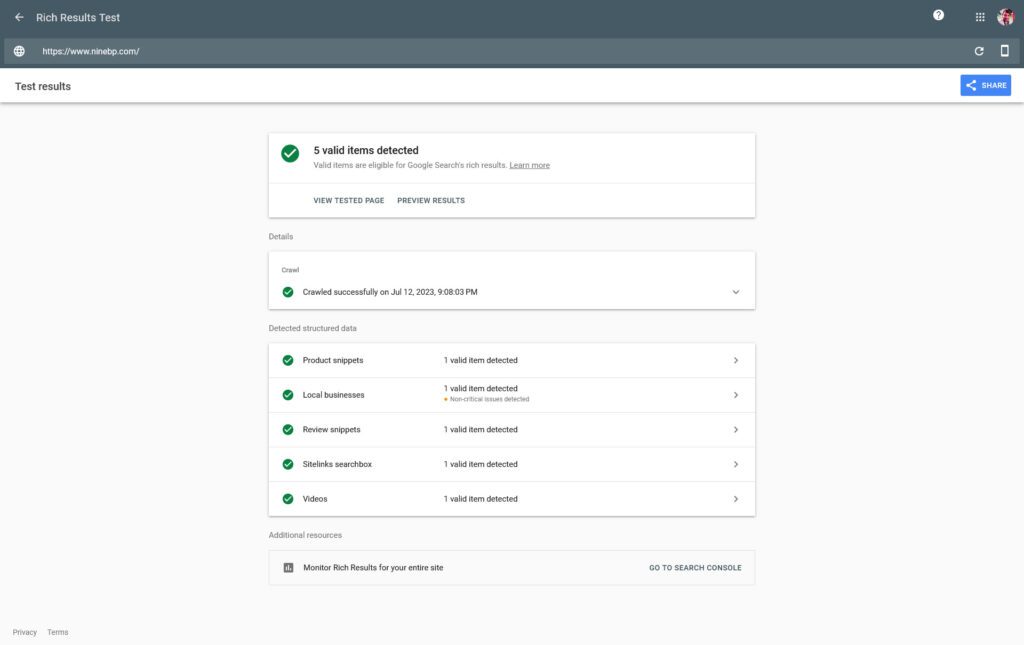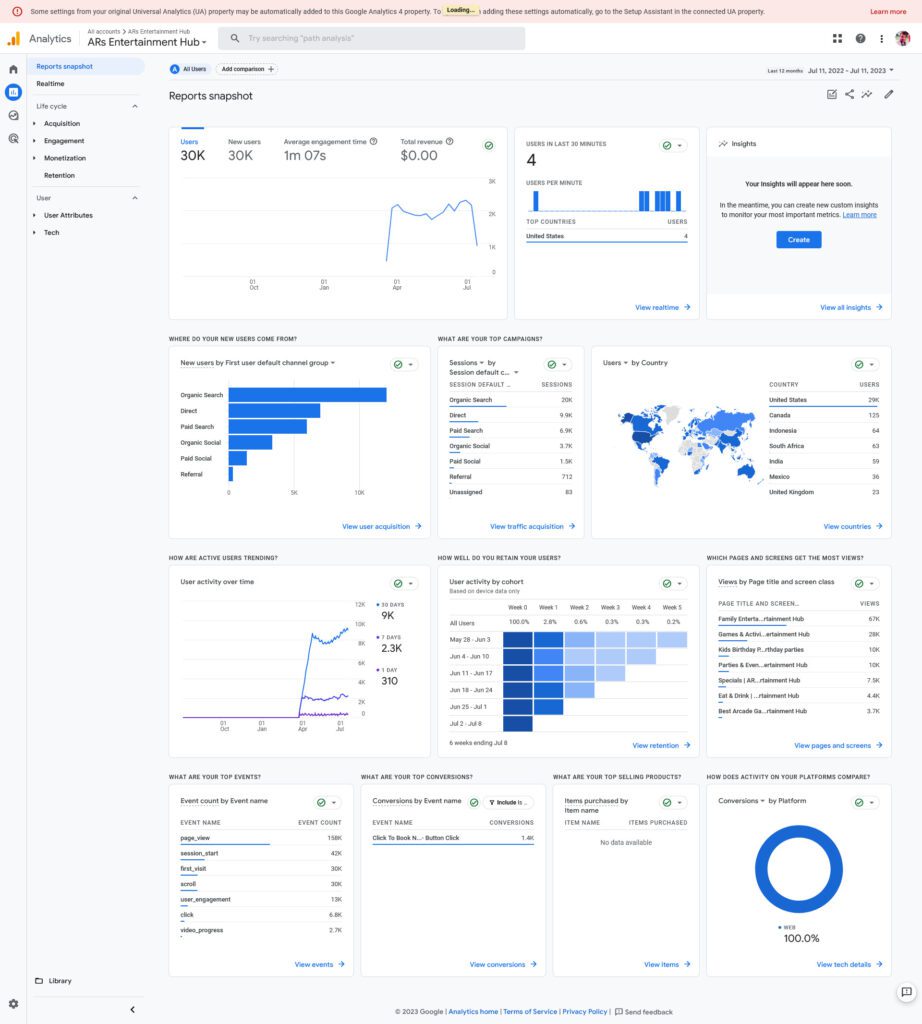Are you a small business owner looking to improve your online presence and attract more local customers? If so, then you need to focus on Local SEO. Local SEO or Local Search Engine Optimization is the process of optimizing your website and online content for local search queries.
By doing so, you can rank higher in the search results when someone in your area searches for products or services that you offer.
In this blog post, we will discuss the top 12 Local SEO strategies that every small business should implement to increase their visibility and attract more customers locally. So buckle up and get ready to take your local marketing efforts to new heights!

Understand What Local SEO Is?
Local SEO is a marketing strategy that focuses on optimizing your online presence for local search queries. In simpler terms, it’s all about helping potential customers in your area find you when they’re searching for products or services similar to yours.
Unlike traditional SEO, which aims to rank your website and content globally, Local SEO targets specific regions or cities where you operate. This means that you need to optimize your online profiles and website with local keywords and location-based information.
To get started with Local SEO, the first step is to understand how people are searching for businesses like yours in your local area.
You can use SEO tools like:
or research competitor websites to identify relevant keywords related to your business and industry.
Another important aspect of Local SEO is ensuring consistency across all online platforms where you have a presence. This includes directories such as Yelp, Yellow Pages, and Facebook Business Pages. Make sure that the information listed on these platforms matches what’s on your website.
By understanding what Local SEO is and how it works, small businesses can increase their visibility in search results within their target market while attracting more customers locally.

1 Optimize Your Google My Business Listing
Optimizing your Google My Business (GMB) listing is one of the most crucial steps for achieving success in local SEO. GMB listings are free and easy to set up, but they require attention to detail if you want to rank higher in local search results.
Firstly, ensure that all details on your GMB profile are accurate and consistent with any other online presence you may have. This includes the business name, address, phone number, and website URL among others.
Next, utilize relevant keywords within your GMB listing as this helps Google understand what services or products you offer. Be specific when choosing categories and subcategories as these will also play a significant role in determining where your business appears on search engine result pages.
To increase engagement from potential customers who come across your profile on Google Search or Maps include high-quality images of both interior and exterior shots of the physical location as well as photos related to products/services offered.
Finally encourage happy clients/customers to leave positive reviews about their experiences with your brand which can help improve click-through rates (CTR), driving more traffic towards a conversion through calls or website visits

2 Get Listed in Local Directories and Citations
One of the most important things you can do to improve your local SEO is to get listed in local directories and citations. These are websites that specifically aim to help people find businesses in their area.
When you list your business on these sites, it not only helps potential customers find you more easily, but it also signals to search engines that your business is legitimate and relevant for local searches.
Start by researching which directories are popular in your area. Some examples include Yelp, TripAdvisor, Foursquare, and Yellow Pages. Make sure that all the information you provide is accurate and consistent across all platforms – this includes your name, address, phone number (also known as NAP), website URL, hours of operation, etc.
In addition to these major players in the directory game, there may be niche or industry-specific directories available which could offer great opportunities for more specialized listings too.
Finally don’t forget about citation building: This involves getting mentioned on other websites with correct NAP information. Citation building can be a powerful tool for increasing visibility amongst new audiences whilst enhancing legitimacy with search engine algorithms – especially when those sources have high domain authority themselves!

3 Optimize Your Website for Local Keywords
Optimizing your website for local keywords is essential if you want to attract potential customers from your area. Local searches are more specific, and the competition is usually lower, making it easier to rank higher in search engine results pages (SERPs).
To optimize your website for local keywords, start by identifying relevant terms that people in your area use when searching for businesses like yours. Use these keywords throughout your website’s content, including titles, meta descriptions, headers, and body text.
Make sure to include location-specific information on each page of your site as well. This means adding your business address and phone number alongside a Google Map widget showing where you’re located. For GMB SEO Optimization check out Point 1.
Improve user experience by ensuring that all pages load quickly and are mobile-friendly. A responsive design will help ensure that visitors can access all parts of the site regardless of their device type or screen size.
Consider creating localized landing pages with unique content tailored specifically to each neighborhood or region you serve. These pages should include relevant keywords but also provide valuable information about the community you serve – such as local events or news stories related to those areas – which can help build trust with potential customers who live nearby.
By optimizing your website for local SEO tactics like the ones above can improve visibility among users in specific geographic locations while increasing traffic volume overall!
4 Create Local Content
Creating local content is one of the most important strategies to improve your local SEO. In order to attract customers to your area, you need to provide them with relevant and useful information that they will find interesting.
One way to create local content is by writing blog posts about events happening in your community or news related to your business. This type of content helps establish a connection between your business and the community.
Another way is by creating location-specific landing pages on your website. These pages should contain information about the services or products you offer in that particular area.
Additionally, consider adding customer testimonials or case studies from clients located in your target area. This not only provides valuable insight into how your business operates but also highlights its relevance within the local market.
Remember, creating high-quality and engaging content can help drive traffic to both your website and physical storefront while establishing trust with potential customers.
5 Build Links from Other Local Websites
One of the most important aspects of local SEO is building links from other reputable local websites. This not only helps to establish your business as a credible and trustworthy source but also signals to search engines that your website is relevant for local searches.
When it comes to building links from other local websites, there are a few key strategies to keep in mind.
Firstly, you’ll want to identify high-quality sites within your niche or industry that have a strong online presence and are likely to be visited by potential customers.
One effective way to do this is through guest blogging – reaching out to other local businesses or bloggers in your area and offering them high-quality content that they can share on their own site with a link back to yours.
Another strategy is through collaboration – partnering with other businesses in your community on events or promotions and sharing each others’ websites across social media channels or through email marketing campaigns.
It’s important when building links from other sites that you focus on quality over quantity – one link from a highly respected site within your industry will carry far more weight than dozens of low-quality links from irrelevant sources.
6 Encourage Customer Reviews
Encouraging customer reviews is an essential part of local SEO strategies for small businesses. Reviews from satisfied customers can increase your online visibility and reputation, leading to more business opportunities.
To encourage customer reviews, it’s important to make the process as easy as possible for your customers.
- You can do this by creating a dedicated page on your website or social media channels where customers can leave their feedback.
- Additionally, you should consider using review management software that will help streamline the review process and allow you to monitor and respond to all reviews in one place.
- Another effective way to encourage customer reviews is by incentivizing them with rewards or discounts. This not only motivates happy clients to share their experiences but also creates brand loyalty among regular customers.
However, it’s crucial that businesses never pay for fake reviews or write fake ones themselves. These actions are unethical and can hurt your online reputation if discovered.
Encouraging customer reviews should be a top priority for small businesses looking to improve their local SEO rankings.
By making it easy for customers to leave their feedback, incentivizing them when necessary, and maintaining ethical standards at all times – you’ll see a noticeable difference in both search engine results and customer satisfaction levels!
7 Monitor and Respond to Online Reviews
Monitoring and responding to online reviews is an essential part of any local SEO strategy. When potential customers search for your business online, they are likely to come across customer reviews on various platforms such as Yelp, Google My Business, or Facebook.
It’s important to monitor these reviews regularly so that you can respond promptly. By doing so, you show your customers that their feedback matters to you and that you are committed to providing excellent service.
When responding to negative reviews, it’s crucial to remain professional and polite. Avoid getting defensive or making excuses – instead, acknowledge the customer’s concerns and offer a solution if possible.
On the other hand, positive reviews should also be acknowledged with words of gratitude. This helps build rapport with your customers and encourages more people to leave positive feedback in the future.
Remember that every review is an opportunity for growth. Use them as constructive criticism by analyzing common themes among negative comments and addressing those issues within your business operations.
Monitoring and responding to online reviews shows that you value customer satisfaction while also improving your local SEO efforts through increased engagement on various platforms.

8 Use Schema Markup
Using Schema Markup is a highly effective Local SEO strategy that can help your business stand out in search engine results pages. By adding structured data to your website, you can provide search engines with additional information about the content on your site, such as reviews, ratings, and other important details.
One of the most common ways to use Schema Markup for Local SEO is by adding location-based data to your website. This includes information such as your address, phone number, and hours of operation. By including this data in your markup code, you make it easier for search engines to identify where your business is located and what services or products you offer.

Another way to use Schema Markup for Local SEO is by highlighting customer reviews and ratings. Reviews are an important factor in local search rankings since they can impact consumer behavior and influence buying decisions. By marking up these reviews with rich snippets or schema.org markup code, you can increase their visibility in search results and potentially attract more customers.
Using Schema Markup is an essential part of any successful Local SEO strategy. It helps ensure that relevant information about your business appears prominently in search results pages while also improving overall user experience by making it easier for potential customers to find what they’re looking for online.

9 Monitor Your Progress with Google Analytics
One critical step in any SEO strategy is monitoring your progress. Without measuring your results, you won’t know whether you’re making progress toward achieving your goals.
Google Analytics is an essential tool for tracking and analyzing website traffic. By using Google Analytics, small business owners can see how users interact with their site, where they come from, what pages they visit the most, and much more.
Setting up Google Analytics is easy enough; all you have to do is create an account and add a tracking code to your website’s header. Once set up correctly, Google Analytics will begin collecting data about your visitors right away.
By regularly reviewing the data collected by Google Analytics, small business owners can make informed decisions on which areas of their site need improvement. This information helps them adjust their local SEO plan accordingly and focus on strategies that work best for them.
Keeping track of your website’s performance with tools like Google Analytics ensures that you are taking actionable steps toward improving its visibility within local search engine results pages (SERPs).

10 Build High-Quality Backlinks
Building high-quality backlinks is an essential aspect of local SEO that many small businesses overlook. Backlinks are links from other websites that point to your website, and they can significantly improve your search engine rankings if they come from reputable sources.
To build high-quality backlinks, start by creating valuable content on your website that other websites will want to link to. This could be a blog post, infographic, or video tutorial. Once you have created valuable content, reach out to other relevant websites in your industry and ask them if they would be interested in linking to it.
Another way to build high-quality backlinks is by leveraging social media networks such as LinkedIn and Twitter. Share your blog posts or infographics on these platforms and tag relevant industry influencers who may then share them with their followers.
Consider guest posting on other relevant blogs in your industry. By doing so, you not only gain exposure but also earn a valuable backlink pointing back to your website.
In summary, building high-quality backlinks takes time and effort but is worth it for the boost it provides toward local SEO efforts.
11 Optimize Your Social Media Profiles
Social media is a powerful tool for small businesses to connect with their local audience. By optimizing your social media profiles, you can improve your visibility in local search results and reach more potential customers.
First, make sure that all of your social media profiles are complete and up-to-date. Include accurate information about your business, such as the address, phone number, and website URL. Use high-quality images that represent your brand and show off what makes your business unique.
Next, use keywords related to your location or industry in your profile descriptions and posts. This will help Google understand the relevance of your content to local searchers.
Don’t forget to engage with your followers on social media by responding to comments and messages promptly. This shows that you value their feedback and care about building relationships with them.
Consider running targeted ads on social media platforms like Facebook or Instagram. You can target specific demographics based on factors like age, gender, interests, and location to reach the right customers for your business.
By optimizing your social media profiles for local SEO strategies, you can increase brand awareness among a wider audience while also driving traffic back to your website or storefront.
12 Target the Right Customers with PPC Ads
PPC, or pay-per-click ads, can be a powerful tool for small businesses to target the right customers. With PPC ads, you can create targeted ads that will only appear to users who are likely to be interested in your products or services.
To start with PPC advertising, it’s important to identify your target audience and research the keywords they use when searching online. You should also consider creating multiple ad variations that highlight different aspects of your business.
One effective strategy is to focus on long-tail keywords – these are more specific phrases that have less competition than broad keywords. By targeting these long-tail terms, you’ll be able to reach potential customers who are looking for exactly what you offer.
It’s also important to consider which platforms you want to advertise on. Google Ads is the most popular platform for PPC advertising but social media platforms like Facebook and Instagram can also be effective depending on your target audience.
Make sure you’re tracking your results closely so that you can adjust your campaigns as needed over time. With careful planning and execution, PPC advertising can help small businesses reach their ideal customer base and grow their bottom line.
Conclusion
Local SEO is a critical aspect of any small business’s online marketing strategy. With the right approach, it can lead to increased visibility and more local customers visiting your store or website.
By optimizing your Google My Business listing, getting listed in local directories and citations, creating local content, building links from other local websites, encouraging customer reviews, monitoring and responding to online reviews, using schema markup, optimizing social media profiles for local searchers, targeting the right customers with PPC ads and tracking progress with analytics tools; you’re on track to dominate your competition.
Remember that Local SEO is an ongoing process that requires continued effort. Stay up-to-date with algorithm changes and adjust your strategy accordingly.
By following these top 10 Local SEO strategies for small businesses outlined above – you’ll soon see a significant improvement in rankings which will translate into increased traffic over time.







